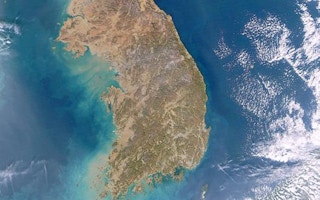Korea will start a new system in 2018 to monitor environmental conditions by launching the world’s first satellite for monitoring climate change over the Korean Peninsula.
The Environment Ministry and the National Institute of Environment Research said Monday in a statement, “We have recently begun to develop an earth environment satellite to monitor climate change and air pollution in Northeast Asia.”
The ministry said the US and Europe observe air pollution and global warming via a low-earth orbit satellite. It floats about 700 kilometers above the earth’s surface and its orbit crosses the Arctic and the Antarctic. Therefore, it can seamlessly monitor air pollution in a region and its movement as well as climate change patterns.
Separately, a geostationary orbit satellite moves like the earth in an orientation standing of more than 36,000 kilometers from the earth. This allows the satellite to focus on a certain point on the earth.
The institute said, “The earth environment satellite will stand over the Korean Peninsula 36,000 to 37,000 kilometers above the earth, which will be the first in the world as a geostationary satellite for monitoring the environment.”
An earth environment satellite will be equipped with facilities such as an optical telescope to measure ultraviolet and visible light waves. The device will track the occurrence and movement of ozone, which causes climate change, and sulphur dioxide, nitrogen dioxide and formaldehyde across 25 million kilometers from the peninsula.
“If the earth environment satellite finds the exact origin and the path of pollutants from China, we can mitigate the damage to our forests and agriculture,” said Hong Yoo-deok, director of the climate and environment research department at the institute, adding, “We can demand damages from China based on our data.”
The satellite’s cost is an estimated 640 billion won (542.3 million dollars).
An Environment Ministry source said, “We will manufacture the body of the satellite in 2015 and launch it in 2018 after running all sorts of tests.”










